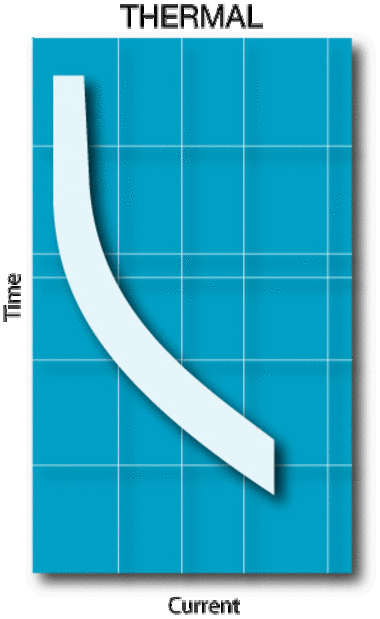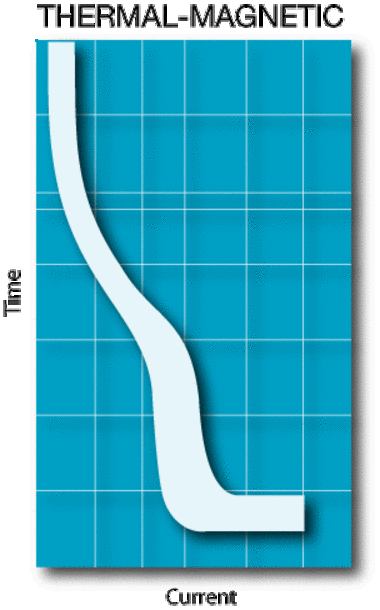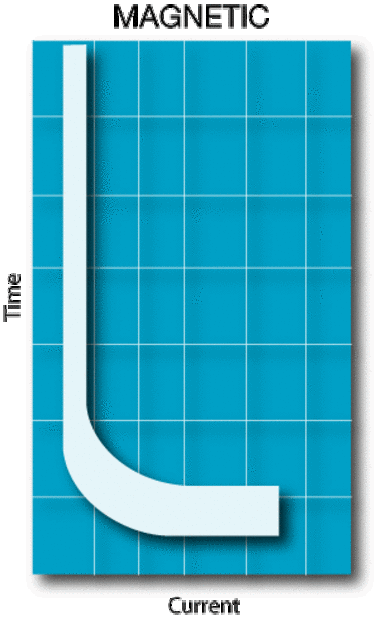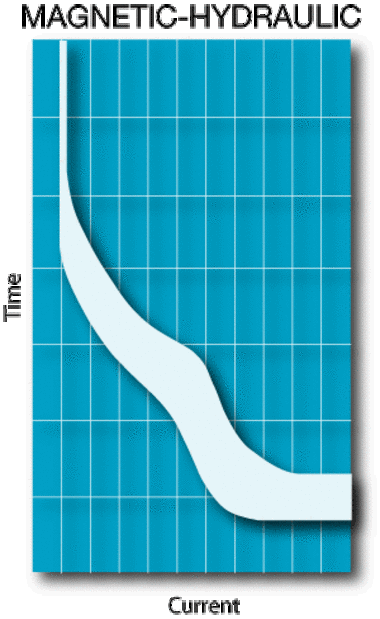Overload or Short Circuit Protection? How to Protect your Design Against Both Dangers
Short circuits and overloads put different demands on circuit breakers. It is imperative that engineers know how to protect their designs against both dangers.
Circuit breakers are used in a variety of ways. They are mounted in panelboards to protect branch circuit wiring and they are built into equipment to protect it. With this range of applications, it's not surprising that a circuit breaker must provide both short circuit and overload protection.
Interrupting a short circuit that is limited by the resistance of the wiring is a very severe test of a circuit breaker, and if the interrupting capacity of the breaker is not adequate, the device can literally explode. Overload currents that reach 2 to 5 times the normal rating of the breaker are handled differently, and very often the circuit breaker must carry the current for an appreciable time without tripping. This white paper will give pointers on how to determine the main job a breaker must do and how to make an appropriate selection.
Protection against shorts and overloads is the largest concern when choosing a circuit breaker. Branch circuits fed from a 480V main need protection against short circuit currents measured in tens of thousands of amperes. For that reason, panelboards are equipped with circuit breakers for branch circuit protection that are listed under UL 489 - "Standard for Molded-Case Circuit Breakers and Circuit Breaker Enclosures" - and are rated to interrupt fault currents from 5000 to 50,000 amperes or higher.
A circuit breaker installed inside a piece of equipment is generally there to protect the equipment itself, and the applicable standard should be UL 1077 - "Standard for Supplementary Protectors for Use in Electrical Equipment". In UL terms, UL 1077 compliant devices are called "supplementary protectors," and are labeled as "recognized components" (not "listed"). They are often called "circuit breakers for equipment" (CBEs). While U 489 breaker and UL 1077 devices protect against both shorts and overloads, the UL 1077 devices tend to concentrate more on overloads - largely because they are always downstream of a UL 489 breaker.
Protection against Short Circuits
The other (generally much higher) interrupting rating specifies the maximum current that the breaker can interrupt safely (ie. without starting a fire) but may be rendered inoperable ("not fit for further use" or not "recalibrated after testing"). Under EN 60934 this is the PC1 rating, while under UL 1077 it is the SC 1 value. Some manufacturers publish both ratings, but many do not.
Protection Against Overloads
Overloads can be short-term or long-term. The protective device chosen must not trip on momentary or short-term overcurrent events that are normal for the piece of equipment it is protecting. Electronic devices, for example, may create inrush currents as their internal power supply and filter circuits start. These inrush currents typically last only a fraction of a second, and seldom cause a problem.
Another class of short-term overcurrents is a motor starting surge. Most motors, especially those that start under load, draw several times their normal current when starting. Other overcurrents may last even longer, and still be part of normal operation. A piece of motor-driven equipment, for example, may draw 50% more than normal current for several minutes at a time and the breaker should not trip under these conditions. If the overload lasts longer than normal, the breaker should open to prevent overheating and damage. What gives the breaker the ability to discriminate between normal and damaging overcurrents is the delay curve.
Delay Curves




There are four choices of delay curves in circuit breakers: thermal, thermal-magnetic, hydraulic-magnetic and magnetic. Each has a different trip profile in relation to a time and current, and each has distinct mechanical characteristics.
Thermal breakers incorporate a heat-responsive bimetal strip or disk. This type of technology has a slower characteristic curve that discriminates between safe temporary surges and prolonged overloads. It is appropriate for machinery or vehicles where high inrush currents accompany the start of electric motors, transformers and solenoids. There are some thermal circuit breakers with hot-wire elements, which provide faster switching. They provide a low cost solution for appliances and printed circuit board protection, among other applications.
Thermal-magnetic breakers combine the benefits of a thermal and magnetic circuit breaker: they have a thermal delay that avoids nuisance tripping caused by normal inrush current, and a magnetic solenoid for fast response at higher currents (Figure 2). Both standard thermal and magnetic circuit breakers are sensitive to ambient temperature. However, they can be selected to operate properly in a wide temperature range.
A magnetic circuit breaker can be combined with a hydraulic delay to make it tolerant of current surges. These hydraulic magnetic breakers are similar to the thermal-magnetic in that they have a two step response curve - they provide a delay on normal overcurrents, but trip quickly on short circuits. Many hydraulic-magnetic circuit breakers are available in a selection of delay curves to fit particular applications. Hydraulic-magnetic circuit breakers are not affected by ambient temperature, but they tend to be sensitive to position. These breakers should be mounted in a vertical plane to prevent gravity from influencing the movement of the solenoid. If mounted in a different position, derating may be needed.
Pure magnetic circuit breakers operate via a solenoid and trip nearly instantly as soon as the threshold current has been reached. This type of delay curve is appropriate for sensitive equipment such as telecommunication equipment, printed circuit boards and impulse disconnection in control applications.
Conclusion
There are several UL standards covering circuit breakers and other protective devices for use in a wide variety of equipment types; choosing carefully can save considerable cost and provide protection tailored to that application. The drawback to this is that the designer must do more homework to select the appropriate device. Considering the money that can be saved, it's probably time well spent.